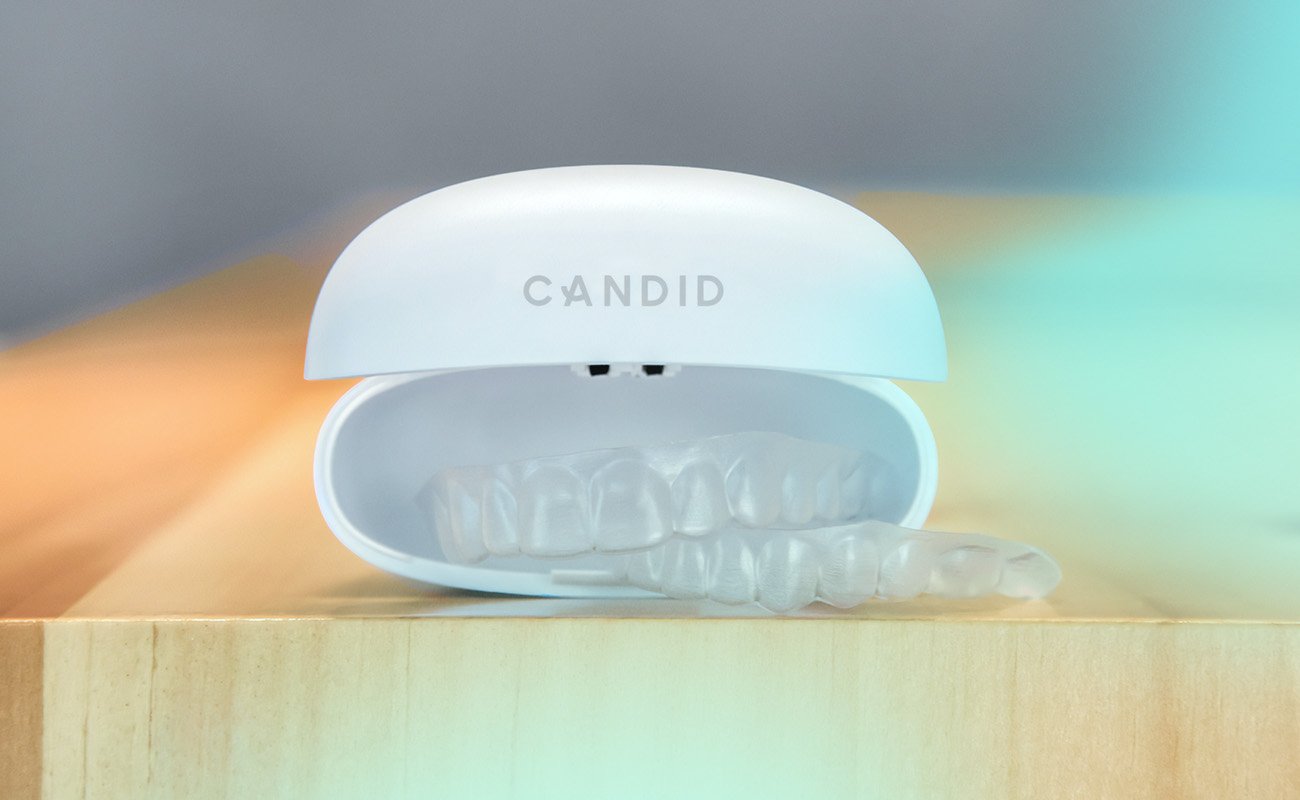Are you considering straightening your teeth with aligners but concerned about the inconvenience of wearing them during the day? Have you heard about the option of wearing aligners only at night and wondered if it’s effective?
This article delves into the topic of nighttime aligners, addressing key questions that might be on your mind. Can you really wear your aligners at night only? How do nighttime aligners compare to their all-day counterparts in terms of effectiveness and convenience? What are the pros and cons of opting for nighttime aligners, and are they a suitable choice for everyone? Furthermore, we’ll explore the expected duration of treatment with night aligners and provide insights to help you make an informed decision.
Can I wear My Aligners at Night Only?
Let’s start by addressing a common question: Can I wear my aligners only at night? While limiting wearing your all-day aligners to nighttime might seem appealing to avoid daytime discomfort or visibility, this approach is not recommended.
All-day aligners are designed for nearly continuous wear, typically around 20 to 22 hours a day, to move your teeth effectively and within a planned timeframe. Wearing them only at night falls short of this requirement, potentially leading to slower progress or less-than-ideal results.
Aligners work on the principle of applying consistent pressure to reposition teeth gradually. By reducing wear time significantly, you’re not providing enough consistent force for the aligners to work as intended, which could extend the treatment duration or necessitate additional adjustments.
Nighttime Aligners as an Alternative for All-Day Aligners
Recognizing the challenge of wearing all-day aligners exclusively at night, aligner companies have introduced a solution: nighttime aligners. These orthodontic devices offer an alternative for people seeking teeth straightening without the inconvenience of daytime wear. Specifically designed for use during sleep, typically for around ten hours, nighttime aligners seamlessly integrate into nightly routines without disrupting daily activities. By capitalizing on the sleeping hours for aligner wear, users can comfortably pursue their everyday tasks without interference.
Pros and Cons of Nighttime Aligners
Nighttime aligners offer a range of advantages and disadvantages that individuals should carefully consider before opting for this orthodontic treatment option. On the positive side, one of the most significant benefits is their discreet nature. Since they are worn during sleep, users can continue with their daily activities without the need to wear aligners during the day.
Moreover, nighttime aligners often use a thicker material compared to daytime aligners. This thicker material may facilitate more significant tooth movement during the hours of sleep. Additionally, the reduced wearing time during sleep may result in less discomfort compared to all-day aligners, as users are not constantly aware of them during their waking hours.
However, there are some drawbacks. One of the biggest drawbacks is the longer treatment duration compared to daytime aligners. Since nighttime aligners are worn for a shorter duration each day, treatment may take longer to achieve the desired results. Additionally, the thicker material used in nighttime aligners may also contribute to increased discomfort for some users, particularly during the initial stages of treatment or after switching to a new set of aligners.
See our article: Nighttime Aligners Before and After.
Do Night Aligners Work?
Night aligners can indeed be effective for addressing mild misalignment issues. Similar to other orthodontic treatments, they can gradually shift teeth into a more desirable position over time.
However, they may not be as potent or comprehensive as traditional braces. Night aligners may struggle to address more severe cases of misalignment effectively. While they can certainly produce noticeable improvements for minor misalignments, individuals with more complex orthodontic issues may not achieve the desired results.
How Long Does the Night Aligners Treatment Take?
The duration of wearing nighttime aligners varies depending on each patient’s unique case and treatment objectives. These aligners are typically worn for approximately ten hours during sleep, utilizing a thicker material to gradually shift teeth into the desired position overnight. On average, the treatment with night aligners usually spans from eight to ten months to reach completion. However, similar to daytime aligners that require more extended daily wear, the effectiveness and duration of treatment hinge on wearing them correctly for the prescribed duration.
See our review of The Best Clear Aligners.
Are Night Aligners a Good Choice?
Night aligners are a suitable option for people with minor orthodontic issues, such as slight crowding or spacing between teeth. Designed to be worn during sleep for around ten hours, they offer a convenient solution for those with busy daytime schedules. While not as powerful as traditional braces, they can effectively shift teeth into a better position over time.
However, for people with more complicated orthodontic issues, such as severe crowding or bite discrepancies, all-day aligners or traditional braces may offer a more comprehensive solution.
Which Providers Offer Night Aligners?
Byte At-Night
Byte-at-Night offers an orthodontic solution tailored for nighttime use, meant to be worn for 10 hours during sleep. Utilizing Byte’s HyperByte technology, it aims to shorten treatment times. While standard Byte aligners require 22 hours of daily wear, concluding treatment in 3 to 4 months, Byte-at-Night extends the treatment period to 5 to 6 months due to reduced wearing time.
Both day and night versions require weekly replacement, but Byte-at-Night is priced higher at $2,399 for a one-time payment, approximately $400 more than daytime aligners, with accordingly higher monthly payments. Both options include the HyperByte device and an end-of-treatment retainer.
See our review of Byte.

Byte
An affordable option with refundable impression kits, free HyperByte, and a Byte for Life guarantee.
Check out Byte AlignersAlignerCo
AlignerCo’s NightOnly Clear Aligners are a practical choice for teeth straightening, designed for nighttime wear over 10 hours. This design allows users to stick to their daily routines without interruption. Priced at $945, these night aligners are slightly more expensive than the all-day version but come with a free retainer and a teeth whitening kit. Treatment duration with NightOnly Clear Aligners ranges from 6 to 8 months, slightly longer than the daytime aligners’ 4 to 6 months.
See our review of AlignerCo.

AlignerCo
The cheapest at-home aligners, with monthly plans, no down payment, and considerable discounts.
Check out AlignerCo AlignersNewSmile
NewSmile’s nighttime aligners are another convenient alternative for those seeking orthodontic treatment without daytime interference, with an average treatment duration of 8 to 10 months. This is notably longer than the 4 to 6 months typically required for their all-day aligners. While the cost of the nighttime aligners is slightly higher than the daytime version, the price difference is minimal. Each aligner package, regardless of whether it’s for day or night use, includes free retainers, a whitening kit, and free shipping.
See our review of NewSmile.

NewSmile
Affordable at-home treatment with positive reviews offering superior look and comfort.
Check out NewSmile AlignersFrequently Asked Questions
Is it Okay to Not Wear Aligners During the Day?
Yes, but only if you have a specialized aligner that is purposely made for nighttime wear only as these are not intended to be worn throughout the day. For standard aligner treatments, it is recommended that they should be worn for 20-22 hours each day for optimal results.
Can I Wear Smile Direct at Night Only?
SmileDirectClub standard aligners should be worn for 22 hours per day for the duration of treatment. However, this brand also offers a unique nighttime-only aligner product that you can wear for 10 hours at night only and is not designed to be worn throughout the day.
Can I Wear Invisalign at Night Only?
Invisalign offers high-quality aligners that must be worn for 20-22 hours per day to be effective. This brand does not offer a night aligner-only product.
However, several other aligner brands offer a nighttime-only solution.
Sources
Anderson, L. E., Arruda, A., Inglehart, M. R., Adolescent Patients’ Treatment Motivation and Satisfaction with Orthodontic Treatment: Do Possible Selves Matter?, The Angle Orthodontist (2009) 79 (5): 821–827. DOI: 10.2319/120708-613.1. Available online at: https://meridian.allenpress.com/angle-orthodontist/article/79/5/821/57639/
Dusseja SH, Rao D, Panwar S, Ameen S. Patients’ views regarding dental concerns and tele dentistry during COVID-19 pandemic Int J Sci Healthc Res. (2020) 5:423–9. Available online at: https://ijshr.com/IJSHR_Vol.5_Issue.4_Oct2020/IJSHR_Abstract.0056.html
Olsen, J., Comparison of Patient Factors Influencing the Selection of an Orthodontist, General Dentist, or Direct-To-Consumer Aligners for Orthodontic Treatment. Virginia Commonwealth University. (2019). Available online at: https://scholarscompass.vcu.edu/cgi/viewcontent.cgi?article=6855&context=etd

